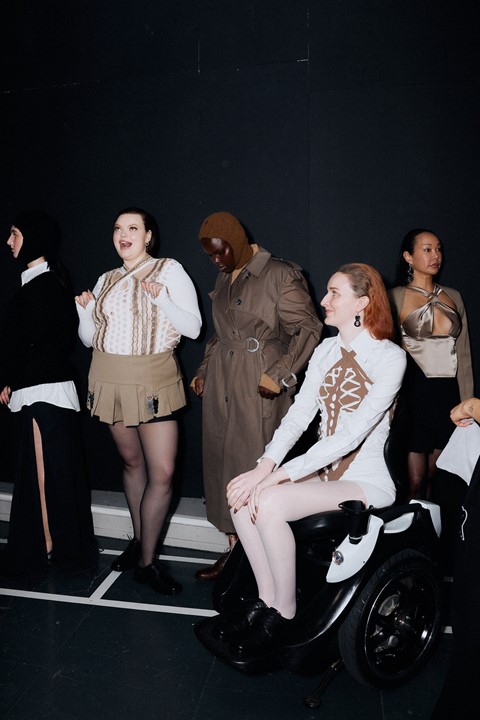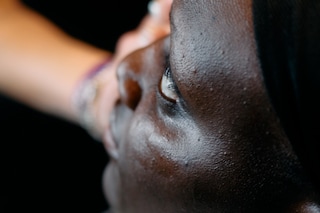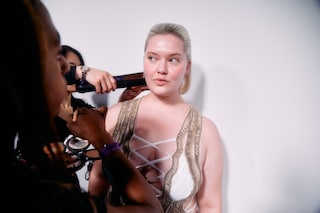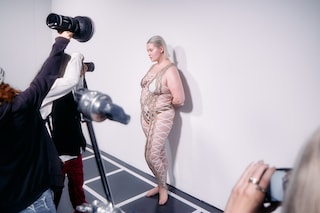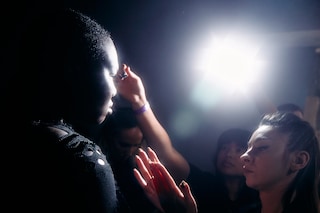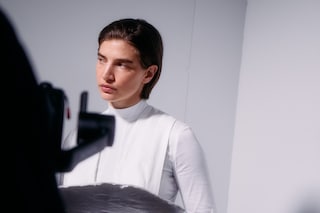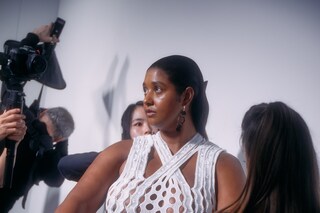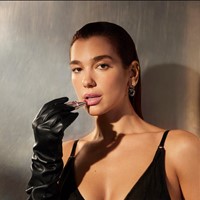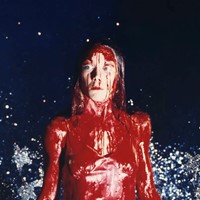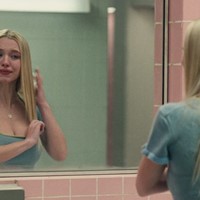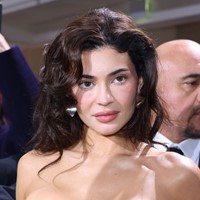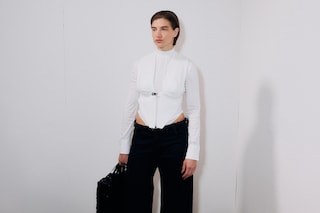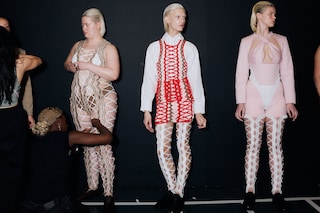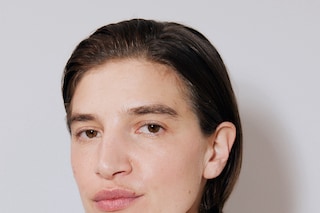This season, the designer continued to champion the diversity of beauty and emphasise that there is no one way to look on the runway
Since the very beginning of her career, Sinéad O’Dwyer has been wholeheartedly committed to diversifying fashion week, sending fat and disabled people down the runway in her body-baring creations. This season, the designer took things one step further, extending her ethos to encompass not just the models but the audience as well through a partnership with Anna Cofone’s charity Hair & Care. The non-profit organisation invited three blind and low-vision women to the show where they were able to get their hair done, experience the clothes through touch and then sit front row with audio descriptions of the looks created by Hair & Care, thus making a fashion show accessible for the blind and low-vision community for the first time.
Cofone, who also keyed the hair for the show, founded the non-profit five years ago to help teach blind and low-vision women about haircare and introduce them to the industry in an accessible way. She says the partnership marked a really special day for the project and the label. “Sinead is really the only designer who is championing accessibility – you’ll see models on the runway that are in wheelchairs,” she says. “I think it’s so brave and so inspiring that a designer is willing to take that risk and really champion inclusivity. It was the perfect partnership to marry Hair & Care with that.”
When it came to the clothes themselves, the concept was oversized silhouettes with fitted tailoring – the aesthetic codes of corporate dress twisted by O’Dwyer’s signature style. The designs were created bespoke for each of the models who had been cast by Emma Matell, known for her commitment to championing the kind of models you never get to see on the runway: people of all races and ages, with bigger bodies and different abilities. Naadirah Qazi went down the runway in her wheelchair, while models including Josefine Jensen, Alex Charles and Alphonsine brought some much-needed plus-size representation to LFW.
The corporate dress code extended to the hair as well, with Cofone finding inspiration in the concept of the power woman. “We’ve taken elements of the 80s; the shape is quite square, slicked back, with a beautiful groomed finish,” she says. “She is a power woman in the office and now she’s going out and she’s in her Sinéad O’Dwyer outfit and she feels really confident and good about herself.”
For beauty, make-up artist Dan Delgado says the brief was to “prioritise enhancing the models’ natural beauty, rather than detracting from it, with personalised touches.” Collaborating with The Ordinary, he prepped the skin with the Squalane Cleanser, Soothing & Barrier Support Serum – particularly good for models with sensitive skin thanks to the hectic fashion week schedule – and the Natural Moisturizing Factors + PhytoCeramides which hydrates the skin and gives it a radiant glow.
The skin prep was key to the final look which sought to mimic one’s complexion after a facial or post-spa. “I aim to recreate a naturally radiant glow and rosy cheek effect, with a focus on achieving a luminous complexion that appears effortless and natural,” says Delgado. “Prioritising the enhancement of the model’s natural beauty, my goal is for them to display a vibrantly fresh and youthful appearance without any distractions.” The final touch was to add a bit of character with faux blonde lashes.
Like many of her previous shows, O’Dwyer’s AW24 presentation moved the needle for what accessible inclusivity looks like in fashion. Claire Sisk, one of the blind women who attended the show – her first-ever – says the experience was phenomenal. “They are trying to be inclusive in the fashion industry – which should be the norm, not the exception – and it’s just wonderful,” she says. Lucy Edwards agreed, saying this was just the tip of the iceberg. “People like me with a lived experience of disability need to have a seat at the table, we want to be there,” she says.
“I want to tell all of those little Lucys that are losing their eyesight right now that it is going to be OK. They will have role models and they can be a fashion designer or a model when they grow up, because I just didn’t see that when I was losing my eyesight. I felt so low and I didn’t have the self-acceptance or the belief in myself that I do now. It’s amazing that I’m here today.”
